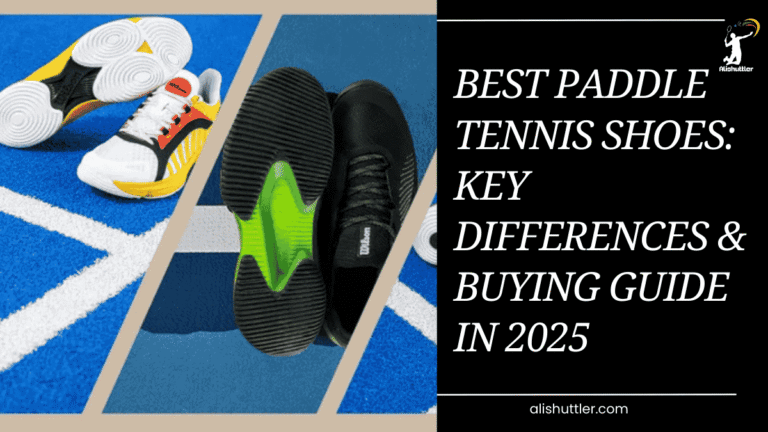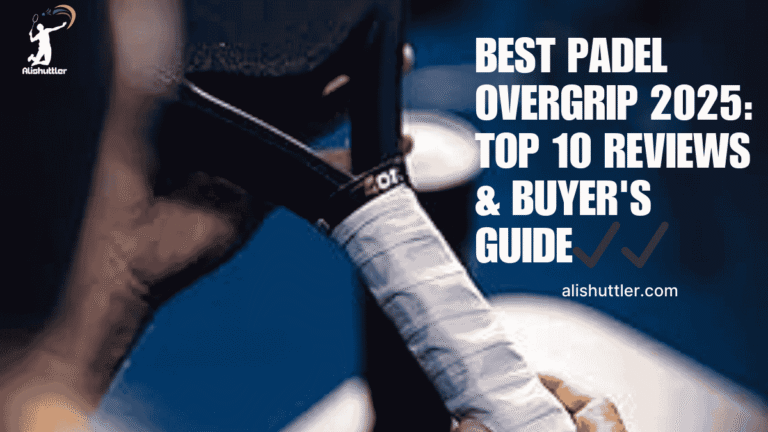Imagine a sport that combines the thrill of tennis, the strategy of squash, and the camaraderie of a backyard game with friends. That’s Padel—a racquet sport taking the world by storm and poised to dominate in 2025. If you haven’t heard of it yet, don’t worry—you’re not alone. But as courts pop up from Miami to Madrid and players of all ages grab their paddles, padel global takeover is impossible to ignore.
So, why is this hybrid game the sport to watch in 2025? Let’s go into its meteoric rise, unbeatable accessibility, and magnetic appeal to tennis fans, uncovering what makes Padel the next big thing.
The Rise of Padel: From Humble Beginnings to Global Phenom
Padel’s story starts in 1969 in Acapulco, Mexico, when Enrique Corcuera, a businessman with a small backyard, built walls around his tennis court to keep balls from flying into the neighbor’s yard. Little did he know he’d sparked a revolution. What began as “Padel Corcuera” spread to Spain via a friend, Prince Alfonso, and then exploded in Argentina and beyond. By the 1990s, formal tournaments were underway, and today, padel boasts over 30 million players across 130 countries, according to the International Padel Federation (FIP).
The numbers tell a compelling tale. In Spain, padel is the second-most popular sport after soccer, with over 20,000 courts and 6 million players. Italy has 9,000 courts, Argentina 7,000, and the sport’s footprint is growing fast in places like the U.S., Sweden, and Japan. The 2024 World Padel Report noted a 40% surge in participation over two years, and industry forecasts predict 70,000 courts worldwide by 2026. In 2025 alone, the Premier Padel Tour will hit 24 cities across 16 countries, including new stops like Miami and Buenos Aires. Events like RacquetX, set for March 22-24, 2025, in Miami, are amplifying its buzz, uniting players, brands, and fans.
What’s driving this rise? Padel’s perfect storm of simplicity, sociability, and excitement. It’s a sport that doesn’t just grow—it thrives, fueled by a grassroots passion that’s now hitting the mainstream. And in 2025, it’s ready to shine brighter than ever.
Why Padel Is So Accessible: A Game for Everyone
One of padel’s biggest strengths is its accessibility. Unlike tennis, which can take years to master, or squash, which demands intense fitness, padel welcomes players of all skill levels with open arms. Here’s why it’s so easy to pick up and play:

Smaller Court, Bigger Fun
Padel courts are about a third smaller than tennis courts (20m x 10m vs. 23.77m x 8.23m for singles tennis). Enclosed by glass walls and wire mesh, they keep the ball in play longer, reducing the need to chase down wild shots. For beginners, this means less frustration and more rallies right from the start. For seasoned athletes, it adds a strategic twist—those walls aren’t just boundaries; they’re tools for creative shots.
Simple Equipment
You don’t need much to get started: a solid paddle (not strung like a tennis racquet), a depressurized tennis-like ball, and a pair of sneakers. Paddles are lighter and easier to handle than tennis racquets, making them forgiving for newbies while still offering depth for pros. Brands like Bullpadel and Babolat are rolling out beginner-friendly options in 2025, keeping costs reasonable—entry-level paddles start around $50-$100.
Doubles by Design
Padel is almost always played in doubles, which cuts the court coverage per player and amps up the social vibe. You’re not just playing a game; you’re bonding with friends or meeting new ones. This team aspect makes it less physically taxing than singles tennis, appealing to casual players and seniors alike. In fact, 37.5% of recreational players are women, and 54% are over 26, per Brainy Insights, showing its broad demographic reach.
Quick Learning Curve
The rules are straightforward—similar to tennis but with a twist. You score points the same way, but you can bounce the ball off the walls, adding a fun, forgiving layer. Most people can rally within their first hour, unlike tennis, where perfecting a serve might take months. This instant gratification hooks players fast, turning first-timers into regulars.
In 2025, accessibility is turbocharging padel’s growth. New courts are sprouting in urban hubs and suburbs, often at a fraction of the cost of tennis facilities due to their compact size. Clubs are offering drop-in sessions, and apps like Playtomic make booking a breeze. Whether you’re 16 or 60, padel’s low barrier to entry is a game-changer.
Padel’s Appeal to Tennis Fans: A Familiar Yet Fresh Twist
Tennis fans are flocking to padel—and it’s easy to see why. It feels like a natural extension of their beloved sport, blending familiarity with a fresh challenge. Here’s what’s drawing them in:
Skill Crossover
Tennis players bring their footwork, reflexes, and shot-making to padel with ease. The underhand serve (a padel rule) simplifies things, but the game rewards spin, placement, and net play—skills tennis pros already have in spades. Top tennis stars like Rafael Nadal and Andy Murray are padel converts, with Nadal spotted playing in 2025 and Murray investing in courts via Game4Padel. Their endorsements signal padel’s credibility to the tennis crowd.
Faster Pace, Shorter Matches
Padel’s smaller court and wall-assisted rallies mean quicker points and less downtime. Matches typically last 60-90 minutes, perfect for busy schedules, compared to tennis’s often grueling three-hour slugfests. For tennis fans craving action without exhaustion, padel delivers. The 2025 Premier Padel Tour’s short-form format—think quarter-finals to finals in a weekend—mirrors this snappy appeal.
A Social Upgrade
Tennis can feel solitary, especially in singles. Padel’s doubles focus flips that script, fostering teamwork and banter. Tennis clubs are noticing—many are adding padel courts to keep members engaged. In the U.S., where pickleball paved the way for social racquet sports, padel’s tennis-like roots give it an edge with purists who find pickleball too basic.
Strategic Depth
Padel isn’t just tennis with walls; it’s a chess match. The glass adds angles and rebounds, forcing players to think three moves ahead. Tennis fans love the mental challenge—volleys at the net, lobs off the back wall, and sneaky drop shots keep it dynamic. In 2025, as Premier Padel showcases pros like Agustín Tapia and Alejandra Salazar, tennis enthusiasts are seeing padel’s tactical richness up close.
For tennis players, padel feels like coming home to a sport they already love, but with a twist that keeps it exciting. It’s no wonder clubs report tennis members trying padel and never looking back.
What’s Fueling Padel Global Takeover?
Padel’s rise isn’t random—it’s riding a wave of trends converging in 2025. Here’s what’s propelling it to the top:
Global Expansion
The Premier Padel Tour’s 2025 schedule is a world tour de force, kicking off February 10 in Riyadh and hitting Miami, Cancun, and Buenos Aires for the first time. With four Majors (Qatar, Italy, France, Mexico) and a Barcelona finale, it’s bringing elite play to new audiences. Free streaming on Red Bull TV and YouTube ensures anyone can watch, amplifying its reach.
Tech Innovation
Smart paddles with sensors and AI coaching apps are hitting the market in 2025, letting players track swings and refine technique. Virtual reality training, already trialed by pros, is trickling down to amateurs, making padel a tech-savvy sport. This aligns with 2025’s fitness tech boom, drawing in younger players.

Celebrity Buzz
From Nadal to Cristiano Ronaldo (spotted playing in Singapore), stars are padel ambassadors. Their involvement—whether playing or investing—sparks headlines and social media buzz, pulling fans into the fold. In 2025, expect more A-listers to join the hype, especially with events like the EA7 World Legends Padel Tour featuring ex-soccer stars.
Community and Lifestyle
Padel’s not just a sport; it’s a vibe. Clubs double as social hubs with coffee bars and lounges, like The Padel Farm in York. The 2025 athleisure trend—think sleek padel gear—ties into its lifestyle appeal. Gen Z, hungry for Instagram-worthy workouts, is all in, per Forbes’ Playtomic Report.
Olympic Dreams
Whispers of padel’s Olympic inclusion by 2032 are growing louder. Its global spread and FIP’s unified rankings make it a contender. In 2025, this buzz will fuel investment in courts and youth programs, cementing its future.
Why You Should Care About Padel in 2025
So, why watch padel in 2025? It’s more than a trend—it’s a movement. For players, it’s a chance to jump into a sport that’s fun, social, and easy to learn. For fans, it’s a front-row seat to a global spectacle, with stars battling on glass-walled courts. For tennis lovers, it’s a fresh spin on a familiar game, blending nostalgia with novelty.
If you’re near a court, grab a paddle and try it—your first rally might hook you. If not, tune into the Premier Padel Tour or RacquetX livestreams. Padel’s takeover isn’t just coming—it’s here, and 2025 is its year to shine. Will you be part of it?
FAQs About Padel’s Global Takeover in 2025
1. What is padel, and how is it different from tennis?
Padel is a racquet sport played on a smaller, enclosed court (20m x 10m) with glass walls and wire mesh, using solid paddles instead of strung racquets. Unlike tennis, it’s almost always doubles, allows wall rebounds, and features an underhand serve, making it easier to pick up while adding strategic depth.
2. Why is padel so popular in 2025?
Padel’s popularity in 2025 stems from its accessibility, social appeal, and rapid global expansion. With over 30 million players, new courts worldwide, and events like the Premier Padel Tour hitting 24 cities, it’s riding a wave of celebrity endorsements, tech innovations, and a fun, community-driven vibe.
3. Is padel easier to learn than tennis?
Yes! Padel’s smaller court, simpler equipment, and wall-assisted rallies mean beginners can start playing within an hour. The underhand serve and doubles format reduce the learning curve compared to tennis, where mastering shots like the serve can take months.
4. Can tennis players switch to padel easily?
Absolutely. Tennis players bring transferable skills like footwork, net play, and spin to padel. The game’s similarities—scoring, court dynamics—make it familiar, while the walls and paddle add a fresh challenge. Stars like Rafael Nadal and Andy Murray have made the switch seamlessly.
5. Where can I watch padel in 2025?
The Premier Padel Tour kicks off February 10, 2025, in Riyadh and spans 24 cities, including Miami and Buenos Aires. Watch free on Red Bull TV or YouTube. The RacquetX festival (March 22-24, 2025, in Miami) will also stream highlights, showcasing pros and trends.
6. How much does it cost to start playing padel?
Entry-level paddles cost $50-$100, balls are about $5-$10 for a pack, and court rentals vary ($20-$40/hour in the U.S.). It’s cheaper than tennis in many areas due to smaller courts and no need for premium racquets or restringing.
7. Why is padel called the “social sport”?
Padel’s doubles-only format fosters teamwork and interaction, making it a natural fit for friends or meetups. Courts often sit near club lounges, and its casual vibe—think coffee after a game—turns it into a lifestyle, not just a workout.
8. What’s driving padel’s growth in the U.S. in 2025?
The U.S. is seeing a padel boom thanks to pickleball’s social sport precedent, tennis club conversions, and events like RacquetX. New courts in cities like Miami and LA, plus celebrity buzz from stars like Andy Murray, are fueling interest.
9. Will padel be in the Olympics soon?
Not in 2025, but it’s on the radar for 2032. With 130+ countries playing and a unified ranking system under the International Padel Federation, its global spread is building a strong case. Expect more youth programs in 2025 to prep for that goal.
10. How can I find a padel court near me?
Apps like Playtomic or PadelMates let you search for courts and book sessions. Check local tennis clubs—many are adding padel—or look for urban pop-ups. In 2025, court numbers are expected to hit 70,000 worldwide, so options are growing fast!





